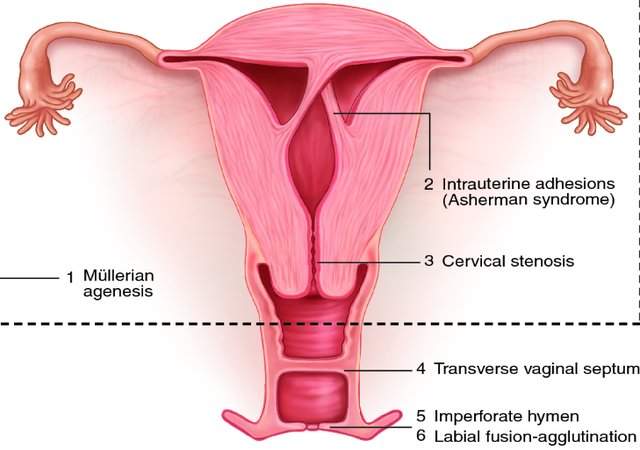There are a lot of body conditions which must be diagnosed and treated differently for the wellbeing of human beings. Similarly, uterine synechiae is one of those conditions and in this article, I am going to discuss it in detail.
Table of Contents
Introduction
Uterine Synechiae is a condition that is linked to the injury in the endometrium. It is also called Asherman Syndrome. This syndrome is characterized by the formation of intrauterine adhesions which can lead to infertility if not treated soon enough.
In most cases, the condition is believed to develop usually four months after pregnancy. One of the reasons why this condition is becoming common is believed to be consistent use of intrauterine interventions.
In pregnancy, the condition has also been called amniotic sheets or the amniotic folds. In some cases, the condition can lead to pregnancy complications.
Several studies have been carried out to test the hypothesis that uterine synechiae is associated with pregnancy complications. (1)
There are many other studies which have been carried out and they have shown some opposing results. Some of the researchers argue that the condition doesn’t affect the development and the growth of the fetus in any way.

Symptoms of Uterine Synechiae
This condition is one of those asymptomatic ones that only show their symptoms when the condition becomes worse. The doctors can only notice the condition during the routine ultrasound checkups during pregnancy.
However, some scientists believe that the condition may lead to several other ailments that can bring signs and symptoms associated with it.
- Amenorrhea
- Lack or loss of Menstruation
- Scanty Menstruation or Hypomenorrhea
Uterine Synechiae may lead to infertility. The worst condition of this syndrome may lead to recurrent abortion of the fetus within the next 3-4 weeks of the pregnancy.
Since the adhesions are like scars which are formed inside the cavity of the uterus, the scar tissue can cause cyclic pelvic pain from periods. When the menstrual blood is trapped in the uterus, a woman may experience some recurrent pain.
Causes of Uterine Synechiae
There could be many causes of it but the following are some of the main causes:
- Experts believe that the majority of the cases that are associated with uterine synechiae are from women who have had an operation touching the uterus or relating to the pregnancy.
- Some other cases are from women who have had an infection involving uterus or the instrumentation before pregnancy. Any kind of infection that may lead to the formation of uterus adhesion is directly associated with the Uterine Synechiae. One of the leading cause of the infections in the uterus is the regular use of intrauterine devices.
- The other cause is the surgical removal of myomas and polyps which can lead to the formation of uterine adhesions.
Treatment
The good news is, that this condition can be treated. Below is the most common method to treat it.
Hysteroscopy is the leading form of treatment for Uterine Synechiae in today’s medical operations.
However, there are no medical studies suggesting a certain method of treatment for this condition. In some cases, the treatment may involve the removal of scar tissue and prevent them from spreading or growing again.
Final Words!
If there are no symptoms associated with uterine synechiae or if the symptoms that exist doesn’t cause any pain or discomfort, there is no reason why an operation should be carried on.
But, if the condition is believed to affect the patient in any way or is believed to cause harm to the baby, then removal procedures should be carried out as soon as possible.
Read Also!
- Hypochromasia: Definition, Causes, Symptoms, and Treatment
- Osler Nodes: Introduction, Causes, Symptoms, and Treatment
The information present on this webpage has not been evaluated by any medical authority such as the Food & Drug Administration (FDA). All information is for educational purposes only. Strictly saying, we do not aim to diagnose, treat, cure, or prevent any disease or illness. You must consult a medical professional before acting on any content on this website.
Usama is a medical student (MD) and loves to share his medical knowledge. He loves to write on different health and medical conditions for a better understanding of a common person. To know more about him visit the About page.

How.so.i.treat unterine synechie
Hello Angela,
It is better to consult with your doctor and explain to him the whole situation.